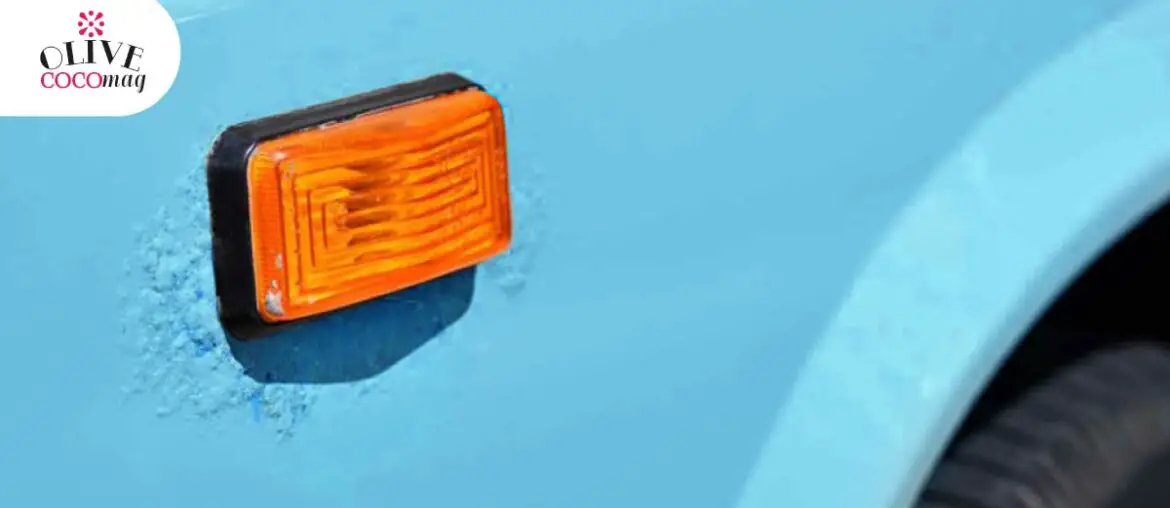Causing of orange peel in the paint might be a concern in people owning a vehicle. However, there are various visibility levels of this. Sometimes the orange peel might be barely noticeable and does not need to be worried about. However, if it is highly visible, then you would be thinking about how to remove orange peel from paint. This is a compilation of all the facts that you need to know about orange peels and how to get rid of them. For better clarification on this, let’s see what this orange peel really is.
Table of Contents
What is Orange Peel?
Orange peel is caused due to imperfection in the texture in a paint job. This can easily be identified as it makes the paint wavy and reflects light in different angles throughout the imperfection. The surface would appear to be bumpy and resembles the orange peel. This is most likely to occur on repainted panels. Sometimes this defect may directly come from manufacturers. This occurs during the curing process of paint.
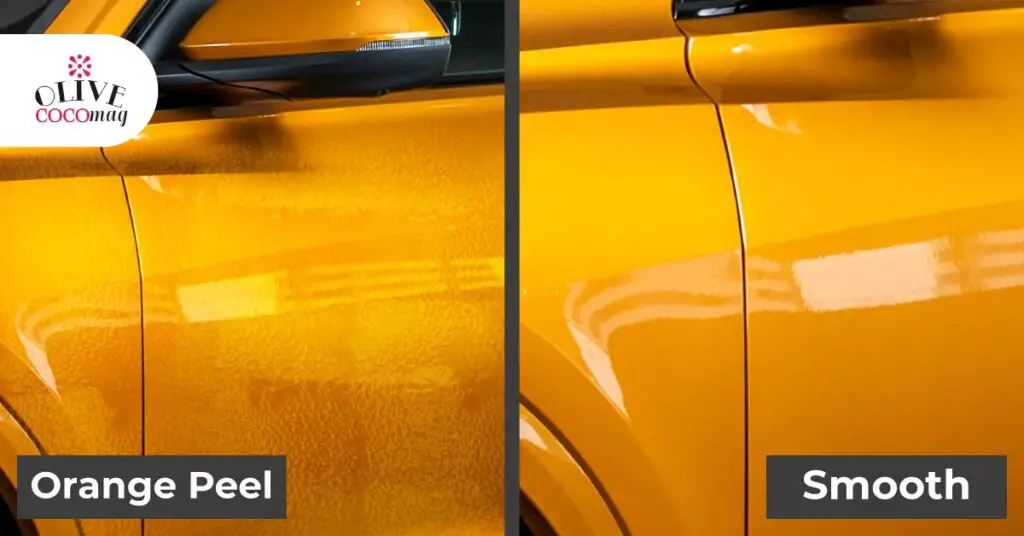
There is specific surface tension in the liquid and the surface has a certain attraction. During the spraying of paint, these tensions and attractions would not be the same in every spot. Therefore, a slight uneven layer would be created on the surface. This difference would be few microns, but noticeable when looked closely. When seen from a distance, it can be observed that the reflection is not sharp and has a dull and slightly uneven nature. This is the basic mechanism behind the Orange Peel effect.
What Causes Orange Peel?
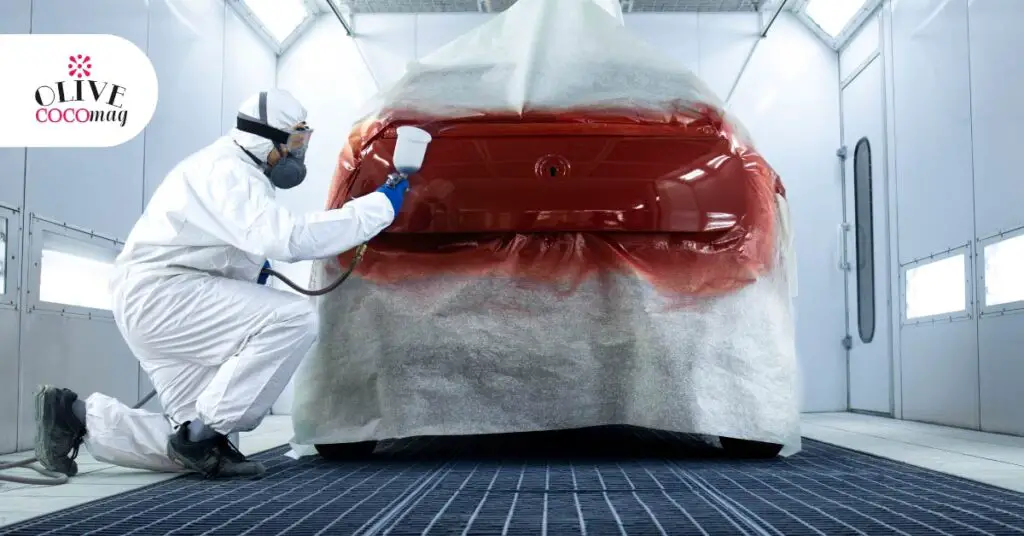
The orange peel effect is mainly caused due to improper painting techniques by the manufacturer or the car body shop. The theoretical reasons behind this would be very high temperatures during the application, premature evaporation of thinner, incorrect spray gun setup, or excessive application of paint. The incorrect spray gun setup implies low air pressure or an incorrect nozzle.
Spraying paint that is not properly mixed and the wrong angle of spraying would also cause this effect. It is found that over 90% of the cause of orange peel is human error. This is why the orange peel effect often occurs on hand-painted vehicles.
The Science Behind It
Two phenomena occur during the curing of the paint. These are solvent evaporation and cross-linking. The solvent is the base liquid that holds the paint together, usually known as thinner. It controls the flow and resists sagging during the process of drying.
It is also responsible for carrying the minute paint particles from the spray gun to the surface of the vehicle. When the paint is being dried up, the thinner (or water in waterborne paints) gets evaporated and the ingredients of the pain shrink, to fill up the voids created by the thinner. Thus, the ingredients get attracted and come in contact with each other
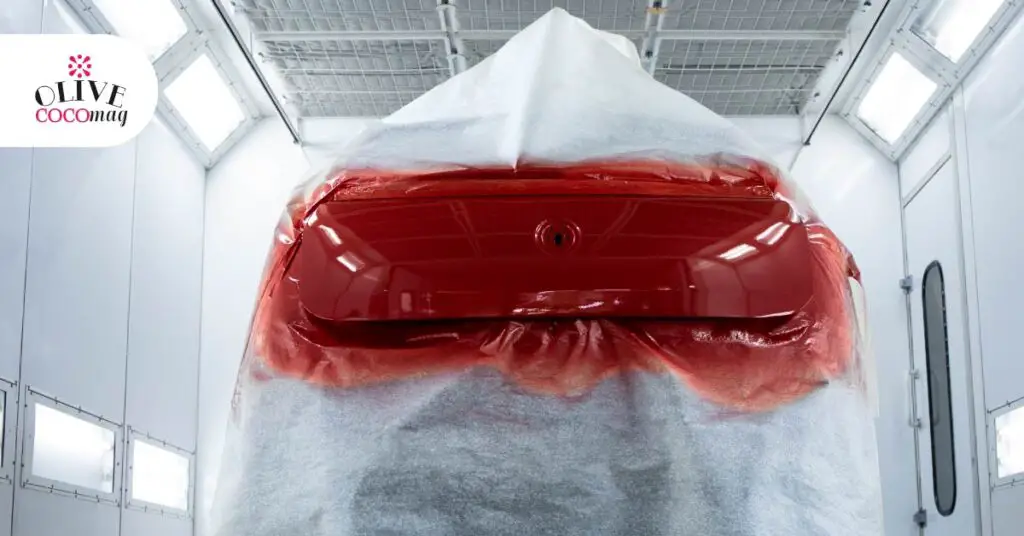
. This is known as cross-linking. Usually, most ingredients have surface tensions that are different from one type to another. The ones with similar surface tension would get clumped together and create unevenness of the surface. This is what we refer to as the Orange Peel effect.
The proper finish can be obtained only from a good solvent that flows well. However, water has high surface tension and does not flow well. The drying rate of waterborne paints is also considerably slow in humid conditions. Hence, the orange peel cannot be controlled very much in these paints.
- Florida Tint Laws For Vehicles 2021
- Connecticut Tint Laws For Vehicles 2021
- ReTinting Car Windows: Why, How, And When?
- Florida Window Tint Laws: Things You Need To Know Before Tinting
- Tennessee Window Tint Laws – 2021
Can All Orange Peel be Seen Easily?
The actual height difference created by the orange peel cannot be observed with the normal eye. The human eye can detect a maximum of only 20µm approximately. The normal mechanical coating would have slight variations of about 1µm that would not be observed. It is when this quality control gets faulty, that the orange peel would occur even by the vehicle manufacturers.
Other Articles You Might Be Interested in: Should I Tint My Car Windows? : Everything You Need to Know
How to Fix Orange Peel?
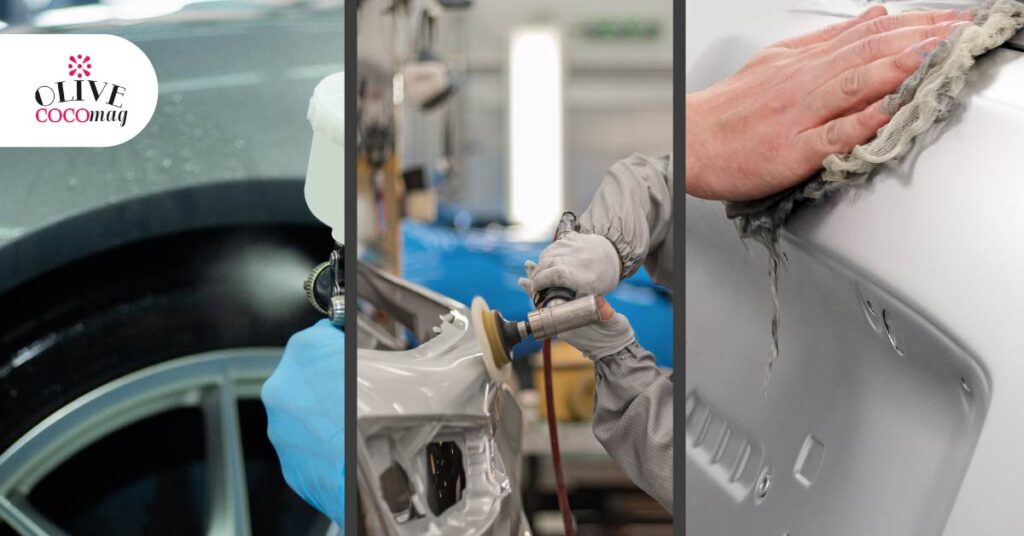
It is recommended to start with medium polish to check whether the orange peel in the paint can be cured. Apply some rubbing compound to see whether the orange peel can be covered with it and that the shiny appearance can be gained back. If that does not help, then you would have to move ahead for the other steps. The wet sanding method is the most commonly used method for this.
- Get a pail of water and add few drops of dish soap. Also, make a spray bottle following the same step.
- Use the least aggressive sandpaper first, and wrap the sanding block with it. This would be preferably 3,000 or 2,000 grit. Dip this in the pail of water and also spray water on the surface that needs to be wet sanded.
- Sand in even strokes applying light pressure from side to side or up and down. Start this with a specific area of about 12 by 12 inches on the orange peel. Make sure to keep the body panel wet during the process. If not, you would permanently scratch the paint.
- During this, wipe off the water regularly with a towel so that you can clearly see the work. Make sure not to sand in too deep and remove any paint. Avoid sanding the edges as there is a high possibility of removing the paint from the edges. For better protection, put some masking tape over the edges. During this process of sanding, the surface will be dulled. You don’t need to worry about this as the shine can be brought back using the rubbing compound at a later stage.
- If the 2,000 grit sandpaper is not doing the required work, then you would have to move for a coarser grit of 1,500 or even 1,000. But never go for anything coarse than 1,000 grit as it can damage the paint completely. It is recommended to use finer grit and sand for a longer time than to use coarser grit and do it quickly, as you need to be gentle in the process.
- If you have used a heavier grit during the process, use 2,000 grit to finish off the scratches. It is acceptable to have some more slight orange peel left on the paint.
- Apply the rubbing compound on the area using a terry cloth. You will only need an amount of 1 teaspoon of the compound for an area of 12 by 12 inches.
- Apply the compound in circular motions. You would see the paint regaining its shine. Wipe off excess compound and check where you need to work more. Make sure not to go over the edges. Be careful as the dry pad could remove paint instantly.
- After you have rubbed in enough of the compound, use a wool bonnet to glaze over the paint. This would create a high gloss on the paint. If the orange peel remains, then you would have to repeat the process with wet sanding.
- The sanding and compound application might have removed the wax you might have used earlier. So, apply a new coat of wax. But if the paint is fresh and not properly dried up, then do not use wax containing silicone.
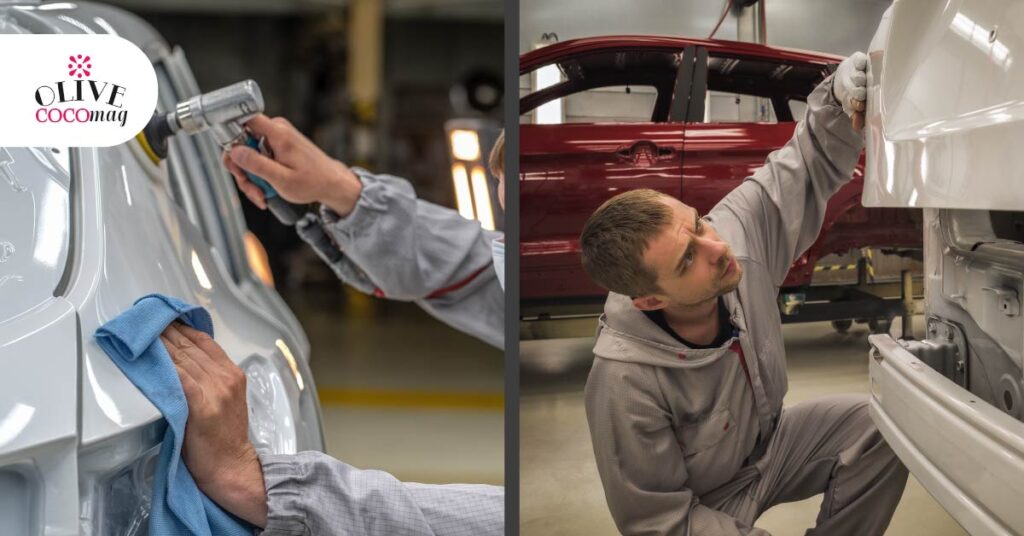
This correction of orange peel in paint is an abrasive process. Microns are removed off the clear coat and hence, you cannot expect to get a finish up to the factory quality or thickness. If you need the full orange peel condition to be removed and the original painting to be restored just like the factory-like condition, then the damaged area would have to be painted again. If you are going for a repainting, make sure to find a talented and experienced professional who is able to avoid the occurrence of orange peel for the second time.
How to Avoid the Orange Peel
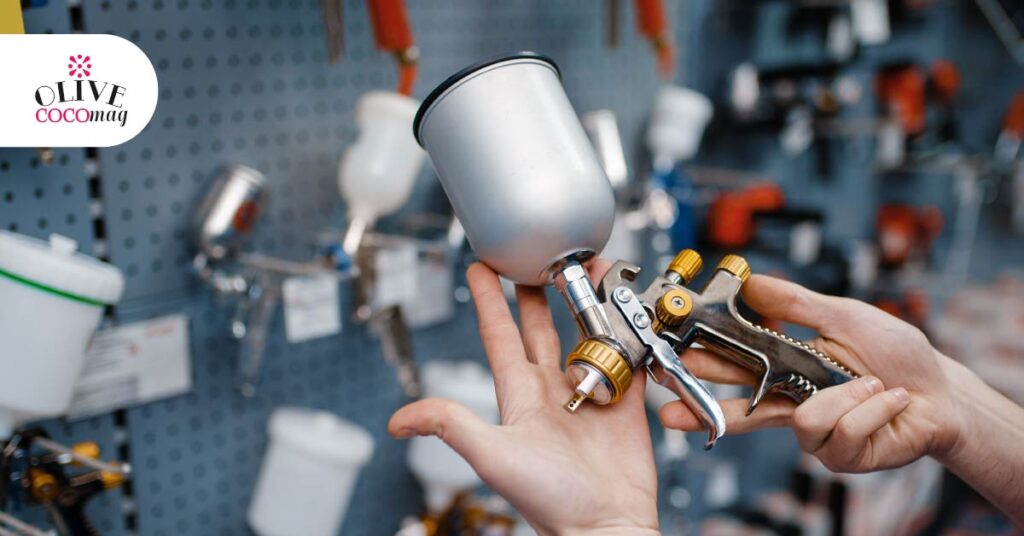
In order to avoid the effect of orange peel during auto painting, it is mandatory to choose the correct size nozzle on the paint gun. If the nozzle is of the wrong size, excess paint would be sprayed on the car. This would create an uneven tone on the surface. Also, make sure to maintain an even pressure and do not get too close to the surface. Throughout this work, ensure that you are painting in a shady area with a mild temperature. If you are working in a hot area, you should start the work only when the surroundings cool down. Through this, you will be able to get your work seamless and perfect.
Is It Worth It?
Removing orange peel completely would be a heavy task. It is nearly impossible to remove it without any scars left behind. However, you would want to think again about the fact of paying a shop and getting your factory finish removed by sanding procedures due to the orange peel of a small area. This would even reduce the thickness of the polish and further diminish it. Of course, the affordability and the outcome of the procedure should be worth the investment. It would be better to smooth out the area by polishing and then apply a nano coating over it. This would cover the blemishes and they would be less noticeable.
Will Orange Peel Wear Off Naturally?
When the clear coat is applied thick, the orange peel would become thin. This would even be about 10 to 12 microns deep inside the clearcoat. By washing the car, exposure to bad weather, parking, and driving out in the sun would wear off these layers. Eventually, the orange peel too would wear off under these conditions.
Not Everyone Notices or Cares
The average buyer would not notice the slight variation of reflectivity on their cars unless it is pointed out by someone else. People might have even seen this effect, but would most likely think of it as the normal factory paint job. The reason for this is that the colors on modern vehicles are more exotic and have a higher gloss. So, there would be people who might not be much familiar with this.
FAQs on Orange Peel

- Will Clear Coat Hide Imperfections?
In reality, a clear coat cannot hide anything. However, depending on how close you look and observe, the visibility of orange peel effect would vary. Application of several layers of clear coat would level off the imperfections up to a certain amount. Nevertheless, this would not go away completely.
- How Long Should Paint Dry Before Wet Sanding?
The paint should be dried for about 12 to 24 hours before wet sanding.
- Does Wet Sanding Remove Clear Coat?
Yes, a clear coat would be removed by wet sanding and application of rubbing compound. It would even burn off the paint and be scratched deeply if the rotary buffer is not handled properly.
- How to Remove Orange Peel Without Wet Sanding?
There are certain advanced Orange Peel Removal Denim Pads that can smooth out the surfaces without having to wet sand.
- How Much Does an Orange Peel Remover Cost?
A denim orange peel remover would cost around $10 to $15 on average.
- Does Clay Bar Remove Orange Peel?
Even though clay bars are capable of removing impurities in the paint, they cannot work like wet sanding to remove orange peel.
- Will Wax Hide Orange Peel?
No, increasing the amount of wax you apply on the pain would not hide the orange peel.
- Window Tinting Aftercare: Do’s & Don’ts 2021Window tinting aftercare is a hot topic researched by people who are have got newly tinted windows. If
- Window Tint Shades for Cars – Chart Recommendations 2021Car window tint shades are the ultimate solution for the rising temperatures in the sunny states. Getting into
- Window Tint Laws By State: InfographicThe window tint laws by state differ across the country. So, before you make the decision to get
- Window Tint Bubbles After Installation: How To Prevent ThemThe formation of window tint bubbles is a common concern you would come across when installing window tints.
- Window Soundproofing Film: Everything You Need To KnowWindow soundproofing film is a practical solution for the problem of high noise penetration inside buildings near busy

